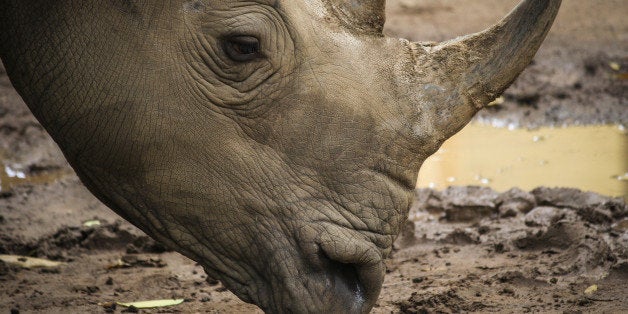
A new poll reveals that demand for rhino horn in Vietnam has declined, just within the last year, by a startling 38.1 percent, mainly as a result of a multi-faceted marketing campaign by Humane Society International and the government of the southeast Asian nation. The United Nations identified Vietnam as a top market for sales of rhino horns -- a process that has driven the killing of more than 1,800 rhinos in South Africa over the last two years -- and it was that information that caused us to swing into action. But the rapid shift in public attitude has been surprising even to us.
Nielsen polls -- one conducted before the start of the HSI campaign and one conducted a year after it had started -- reported a drop of 25.4 percent over a year in the number of Vietnamese who believe that rhino horn has medicinal properties. In the city of Hanoi, where most of the public information campaigns have been concentrated, there was a 77 percent decrease in the percentage of people who buy or use rhino horn.
The HSI's three-year campaign, in partnership with Vietnam CITES Management Authority, used a variety of approaches to build awareness from the grassroots - and to drive home the message that it is illegal to buy, sell and transport rhino horn in Vietnam. These approaches include:
- Working with the Hanoi Women's Association to deliver campaign messages to its 800,000 members.
All five of the world's rhino species are now threatened with extinction, and poaching is the single greatest threat to their existence. While some animals are killed for their horns, a small number remain alive after the horns are hacked off their faces. Scientific studies show that this immense suffering to the animals comes for no reason: rhino horn has no curative properties and it is composed of keratin, the substance found in hair and fingernails.
The Nielsen poll found that a small number of Vietnamese -- 2.6 percent -- continue to buy and use rhino horn. We'll be working to continue to build awareness and to cause the whole of society to shame the people who persist in driving the consumption of this product, which is propelling a poaching crisis in Africa thousands of miles away. We must continue this campaign to stop the killing of these magnificent, prehistoric-looking creatures, since their very survival on this planet is at stake.
This article first appeared on Wayne Pacelle's blog, A Humane Nation.
